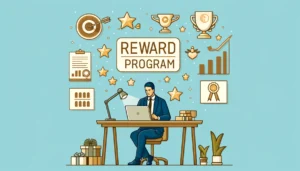Why Danone is benefiting from its commitment to coaching
- 5 Min Read
Is coaching and mentoring right for your organisation? Danone explains why it’s workforce has embraced the new opportunities.
- Author: Owain Thomas
- Date published: Jul 6, 2016
- Categories

Is coaching and mentoring right for your organisation? Danone explains why it’s workforce has embraced the new opportunities.
Danone took its big leap into coaching in 2011.
Despite being a strong growth business in a time of much strain for other corporates and stock market crashes, it was felt that all was not right within the Early Life Nutrition part of the business.
“We had massive engagement scores behind our core purpose and there was a huge belief in what we did,” Danone UK head of learning Paula Ashfield told the CIPD Learning and Development show.
“However, when we looked around the business, the analogy that we drew was it was a bit like a library – there wasn’t really a buzz. There was committed passion, but not an inspiring and uniting passion. It had driven great growth but we weren’t sure it was going to sustain us for the future.”
She added: “We needed to think differently and see different possibilities – we needed to see different possibilities about our business and how we did things, but also in terms of our talent.”
Limited talent pool
With the business based in the south west of England away from the country’s main urban centres, the talent pool was limited and it was difficult to draw recruits.
So the senior management realised they need to do something different to boost the business and develop the talent within it.
One of the reasons for turning to coaching was a realisation that to shift the business onto a new path there needed to be a substantial degree of trust.
Coaching was seen, among other things, as a great enabler for building those trusting relationships.
“A lot of our leaders were weighed down with the doing because that’s what made us good, made us successful, that’s what we valued and appreciated,” Ashfield said.
“But if we were going to be exploring new possibilities and going to ignite people’s passion, we had to help create that sense of trust to enable us to take a bold step forward.
“It wasn’t going to happen if we couldn’t throw off the comfort blanket and do something differently,” she added.
Breaking the mould
So in 2011 the implementation began by setting expectations that things were going to be different.
This included ensuring all the more than 220 employees had good individual development plans with clear objectives and then giving managers some basic coaching skills.
In another break from tradition, those programmes were also made available to other people in the business so they could pass on their skills too.
“We started helping people see that learning takes lots of different forms than in the classroom,” Ashfield continued.
“That was quite difficult but helping people see learning in a different way did two things: It enabled us to use managers to embed learning, not just formally coach people day-to-day, and also it meant we could do more day-to-day with more informed learning.”
Enabling leaders
In 2012 another bold step was taken – the decision to make all the senior leaders accredited business coaches.
All 22 went through the six month programme together, and the company committed that anyone who failed to pass first time would be supported until they were accredited.
This coaching often took place cross-function, which opened the programme to a new level.
“When you coach cross-function you’re putting a huge amount of trust in them,” Ashfield said.
“The coach can have a much deeper relationship with your employee than you can. So that trust was building in a really solid way through all of those 22 people at the same time. And that’s what created that really profound effect.”
Business knowledge
Another benefit to the cross-functional coaching is participants obtaining a wider understanding of the business.
Since 2012 it has become part of the graduate development programme, and the continuous reflection has made it through all the stages of embedding.
Of course, any development programme is only as good as the value it brings to the business. It appears this one has been successful in achieving the original aims.
Ashfield and her team have been tracking a question asking about the opportunity for personal development and growth in the annual survey since the project began. It has risen nine points since the start, breaking the 80% barrier.
She also cites the high performing companies’ index which has seen a 10 point increase in the organisation’s score.
“So when we start to benchmark externally, those opportunities for learning and growth are really leading the business. Internal recruitment is up 33% too – that’s a very conservative estimate because I’ve stripped out things like graduate recruitment and internal secondments.
“There’s been a massive difference in terms of opportunities and how we enable people to take on different roles, and that has come entirely from the ways we recognise talent differently to before.
“Can I say coaching alone has helped us change our business? No, of course it hasn’t. But I can say that it has helped people contribute in different ways and contribute far more than just the functional brilliance they may have been employed for,” she concluded.









